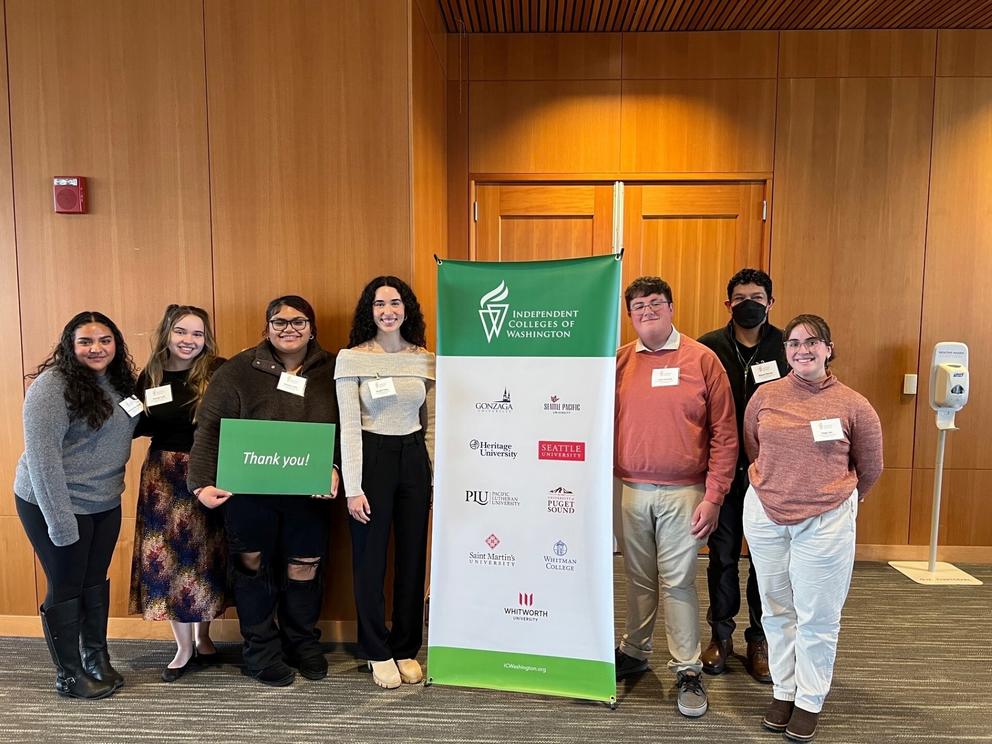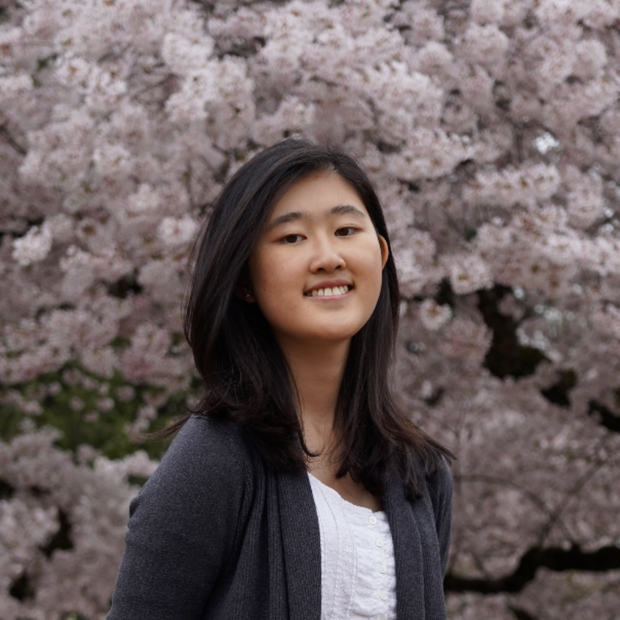“I honestly couldn’t find that one high school counselor or teacher who would stop discouraging me from going to college,” Ioane said about her time at Washington High School in Parkland, a suburb of Tacoma. “I actually had a lot of teachers who told me, you know, maybe you should think about taking a gap year or doing something else.”
Thanks to the Washington College Grant and the Federal Pell Grant, Ioane has been able to access higher education. Submitting the FAFSA also helped her apply for and be awarded a scholarship through the Act Six program, which aims to help grow students as leaders who can build their communities by getting a college education.
Despite the generous financial aid available to Washington students, the state’s low FAFSA filing rates relative to those of other states highlight the barriers to higher education that many students, especially those without family members who went to college, face. For students like Ioane, figuring out a complex form like the FAFSA can be a daunting task.
National problems with the FAFSA this year highlighted these long-standing access issues in Washington. The state ranked 47th for FAFSA completion last year, with 44.9% of high school seniors in Washington completing a FAFSA for the 2023-24 cycle, according to the National College Attainment Network. Washington ranked 48th in the country in 2018, when 46.1% of seniors completed the FAFSA.
Meanwhile, Washington ranked in the top five states nationally in 2021-22 for the amount of need-based aid offered per full-time equivalent undergraduate, at about $2,008 per student, according to the National Association of State Student Grant and Aid Programs.
Because of a delayed launch and additional technical issues this year, the U.S. Department of Education announced that it wouldn’t send FAFSA data to colleges until at least the first half of March. Several schools have pushed back the deadline by which students must indicate their decision to enroll from May 1 to June 1 to give students more time to decide after they receive late financial aid offers.
As of March 29, the National College Attainment Network’s FAFSA Tracker shows that 35% of high school seniors nationwide have submitted a FAFSA for the next academic year.
Overcoming fears and misconceptions
Ioane said her parents were worried about sharing information with the government through the FAFSA. She encouraged them to trust the process and take a chance, knowing that many other students have received aid and benefited.
As a counselor at Moses Lake High School, Lilia Hueso has learned that many of her students have fears and misunderstandings about financial aid. For her first five years as a counselor, she worked mostly with students from the first generation in their families to go to college. She heard students tell her that they didn’t want to go into debt or that they had heard that a friend or sister didn’t qualify for aid, inclining them to not apply.
This year, Hueso has been assigned a new group of students (last names starting with Ri to Sv), adding extra stress to her plate as she learns about the new FAFSA while getting to know the needs of her new students.
“I’m juggling,” Hueso said.
Hueso used to be able to host FAFSA nights for multilingual and migrant students, but those kinds of events are now the responsibility of the college and career counselors at Moses Lake High School.
“I will not say I don’t have a voice, but [I’m] not being able to help enough like I used to,” Hueso said.
Colors of the World club officers and members gather for a group photo during a “Soccer Game Watch” event the club hosted at Moses Lake High School on March 16, 2024. Colors of the World, formerly the MEChA (Movimiento Estudiantil Chicano de Aztlán) club, aims to give students a space to share their culture, promote higher education, and support each other academically and socially. (Courtesy of Sam Alvarado)
However, resources such as the free OtterBot texting service, financial aid workshops through the Washington State 12th Year Campaign, the Student Loan Education Site and financial aid estimate calculators are available. And trusted mentors play an important role in encouraging students to file for aid.
“You can help by having outreach and advertising and messages, but [students] really need to have those messages reinforced and strengthened on the ground with people they know,” Washington Student Achievement Council executive director Michael Meotti said.
For Hueso, being a counselor as well as an advisor for the Colors of the World club is about meeting students where they are, regardless of their background, and believing in their ability to achieve. Her dream is to see more students of color and first-generation students in higher education.
Students making their voices heard
Sam Alvarado, an event coordinator for Colors of the World, said Hueso has been one of his biggest supporters as he prepares to apply for colleges because she shares his background as a first-generation college student.
Alvarado would like to see more information about the FAFSA and other student aid opportunities, like the WAFSA, or Washington Application for State Financial Aid, around the school. The WAFSA is for individuals who aren’t eligible to file a FAFSA for reasons such as their immigration status.
“A lot of my student peers are from low-income backgrounds, and [college is] just something that isn’t an opportunity for some of them,” Alvarado said. “Like college is something that has never even crossed their mind because they’re so concerned about, like, tuition fees and everything.”
From left to right: MLHS College & Career Readiness Counselor Enrique Tarver, junior Sam Alvarado, Counselor Lilia Hueso and senior Daissy Quevedo attend an event at the Bill & Melinda Gates Foundation Nov. 16, 2023. The group represented their school and district to talk about their personal experiences and what they would like to see changed around topics such as financial aid and college and career counseling. (Courtesy of Sam Alvarado)
Alvarado, alongside Ioane and master’s student Becca Tibbetts, joined education professionals in a recent webinar hosted by the League of Education Voters to talk about how institutions are responding to this year’s delays in financial aid. Alvarado is a member of the Association of Washington Student Leaders, and Ioane and Tibbetts are regional coordinators in the Washington Student Engagement Networks, which train students in advocating for their interests with the state Legislature.
During the webinar, Tibbetts said that FAFSA days have been a successful strategy on her campus to help walk students through the financial aid application process. She said that offering financial literacy classes in high school to expose students to snippets of the FAFSA earlier would also be helpful.
“If they have to grasp that concept at an early age, it might help promote the filling out [of] financial aid forms as well as promoting it in higher education for those students who are returning,” Tibbetts said during the webinar.
Education professionals spoke about how organizations are encouraging students to pursue higher education. One of these is the Washington Guaranteed Admissions Program, which gives 11th and 12th graders who meet minimum requirements a guaranteed space in participating public four-year institutions.
After an April 10 hearing before a Congressional committee on the FAFSA delay, Rep. Judy Chu, D-Calif., the chair of the Congressional Asian Pacific American Caucus, issued a statement expressing concerns about how this new barrier to financial aid may disproportionately affect students of color and their access to higher education.
“I am deeply concerned … about the devastating and disproportionate impact these delays and glitches are having on the ability of low-income students and students of color to submit applications,” Chu wrote. “Even if they’re able to submit applications, delays compress the timelines for students to receive financial aid offers from colleges and decide where — or if — they would be able to ultimately enroll.”
Meotti encouraged students to be patient and persistent.
“It’s going to work out,” Meotti said. “Don’t give up. Particularly don’t listen to the rumors. Don’t worry about deadlines. And if you have any questions, call the college that you apply to for financial aid and they’ll be able to tell you what the situation is.”






